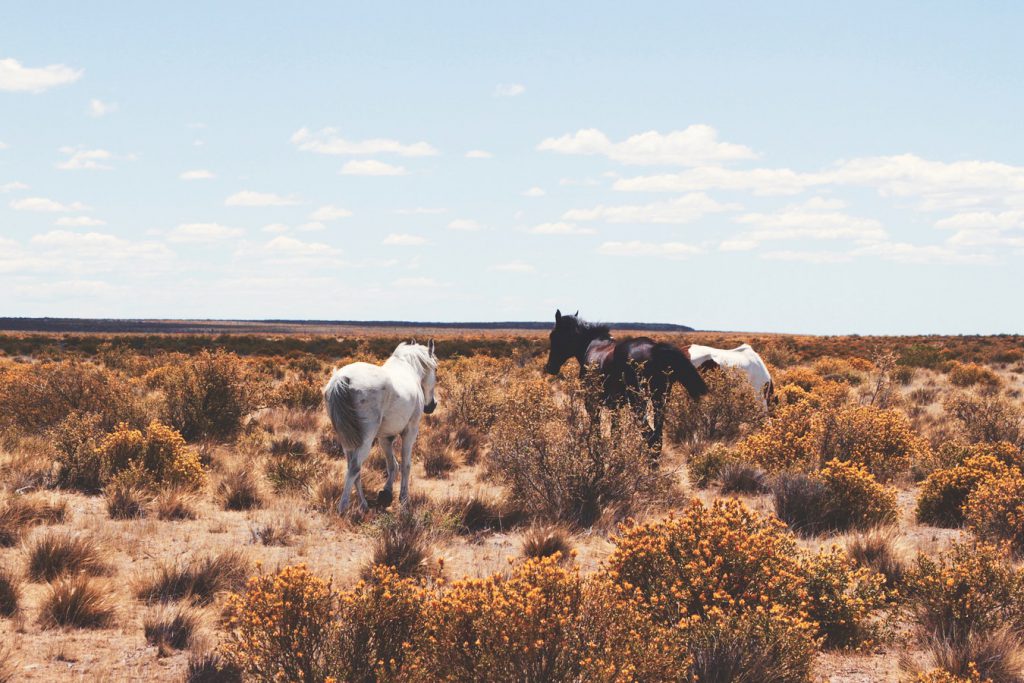Horses belong in the Desert Southwest where they and their ancestors co-evolved with wildlife and plants over millions of years.
With that said, though, we have a problem. Removing large nomadic grazers as well as most prey and most predators combined with the sincere but misguided prohibition of herd culling has been disastrous to ecosystems — and horses and burros. Defenders of wildlife, including wild horse and burro advocates, must allow effective population management of wild equines, including humane slaughter, to resume.
If all sides of the debate will reject the ideology and fake science of invasive species biology and instead defend biodiversity and holistic management of rangeland and wildlife that incorporates holistic planned grazing of cattle and horses into wildlife management, rangelands will recover much faster than Congressman Stewart predicts.
NOTE: This article was published to the NYTimes.com on December 25, 2017. It was written by Chris Stewart, the Republican congressman from Utah.
We have a wild horse problem — and it’s having a devastating impact on these majestic animals that so many of us love.
I grew up on a farm in Idaho. No one has to show me how to put a saddle on a horse. I respect these powerful animals and consider them emblems of the West. But though we may envision bands of mustangs sprinting through lush fields of tall grasses, we have to realize that the truth is much bleaker.
The federal government’s Wild Horse and Burro Program is broken, leaving thousands of animals to starve. The Bureau of Land Management says that the nearly 27 million acres it manages for wild horses and burros can sustain only about 27,000 animals. This year, the bureau estimates that there were more than 72,000 wild horses on the land, almost 50,000 too many and all fighting to survive.
Making matters worse, wild horses are very fertile; their population increases 20 percent a year, meaning the number of wild horses will double in the next four years. Overgrazing by these horses has also hurt local deer and elk populations. The range could take a generation to recover.
This isn’t just a horse management disaster, it’s a financial disaster too. In addition to the 72,000 horses it oversees on the range, the B.L.M. keeps about 45,000 horses that it has removed from the wild in corrals, off-range pastures and in sanctuaries. Over their lifetime, these horses will cost taxpayers roughly $1 billion overall, according to the B.L.M. That’s $1 billion we could otherwise spend on defense, education, job training or any other worthy cause.
But the alternative for these horses is starving in the wild. For example, in 2015, the B.L.M. employees were dispatched to a desert in Nevada outside of Las Vegas to round up about 200 wild horses that were reported to be starving to death. Federal land managers had determined that the 100,000-acre expanse where these horses were grazing produced only enough grasses and water to sustain 70 horses.
Bureau employees discovered nearly 500 horses. They had pounded their range to powder; the desert grasses that remained had been eaten to the nubs. Nearly 30 were in such poor condition they had to be euthanized, and many others were on the brink of death.
How can anyone consider this acceptable?
Although the finger is routinely pointed at the B.L.M. for mismanagement, the bulk of the blame lies with shortsighted decision-making by misinformed but well-meaning members of Congress.
Congress had once supported laws that allowed for proper management of these animals. Horses in excess of what the land could sustain were to be captured, put up for adoption, sold without restriction — including to slaughterhouses, which the B.L.M. does not do as a matter of policy — and as a last resort, humanely euthanized. The program wasn’t perfect, but the B.L.M. was able to keep the herds’ numbers in check while ensuring that the ranges were viable and healthy year after year.
But since 2010, Congress has used annual appropriations acts to significantly restrict the ability of the B.L.M. to sell or euthanize horses. And while in the early 2000s people were willing to adopt 8,000 horses a year, more recently that number has dropped to 2,500, possibly because of the economy.
Some horse advocates urge expanded use of birth control to keep horse populations in check. Birth control is part of the solution, but it’s not a panacea. The most humane methods require mares to be treated once a year. That’s feasible in herds that roam small areas, such as those on the Eastern Shore of Maryland, but herds in the West are scattered over thousands of acres that equal the land mass of Mississippi.
What’s more, a mare can’t already be pregnant at the time of treatment. That’s a tall order given that pregnancy rates tend to be high at any given point in the year. Is it any wonder why the B.L.M. is able to treat a mere 1,000 mares each year in the West?
I love horses and view them the way most people view their pet dogs. But witnessing our nation’s wild horses and burros starve to death and overrun the range must compel us to act. This year, the House Appropriations Committee approved my proposal to remove language from the Interior Department’s budget that bars the B.L.M. from euthanizing captured healthy horses it is holding. The House should ratify this action when it votes on the budget in January.
I understand that some will recoil from this approach. But anyone who really cares about these majestic animals must understand that other efforts have failed to curb their exploding population and that culling these herds to numbers the land can sustain is the best way to prevent further suffering and death.

